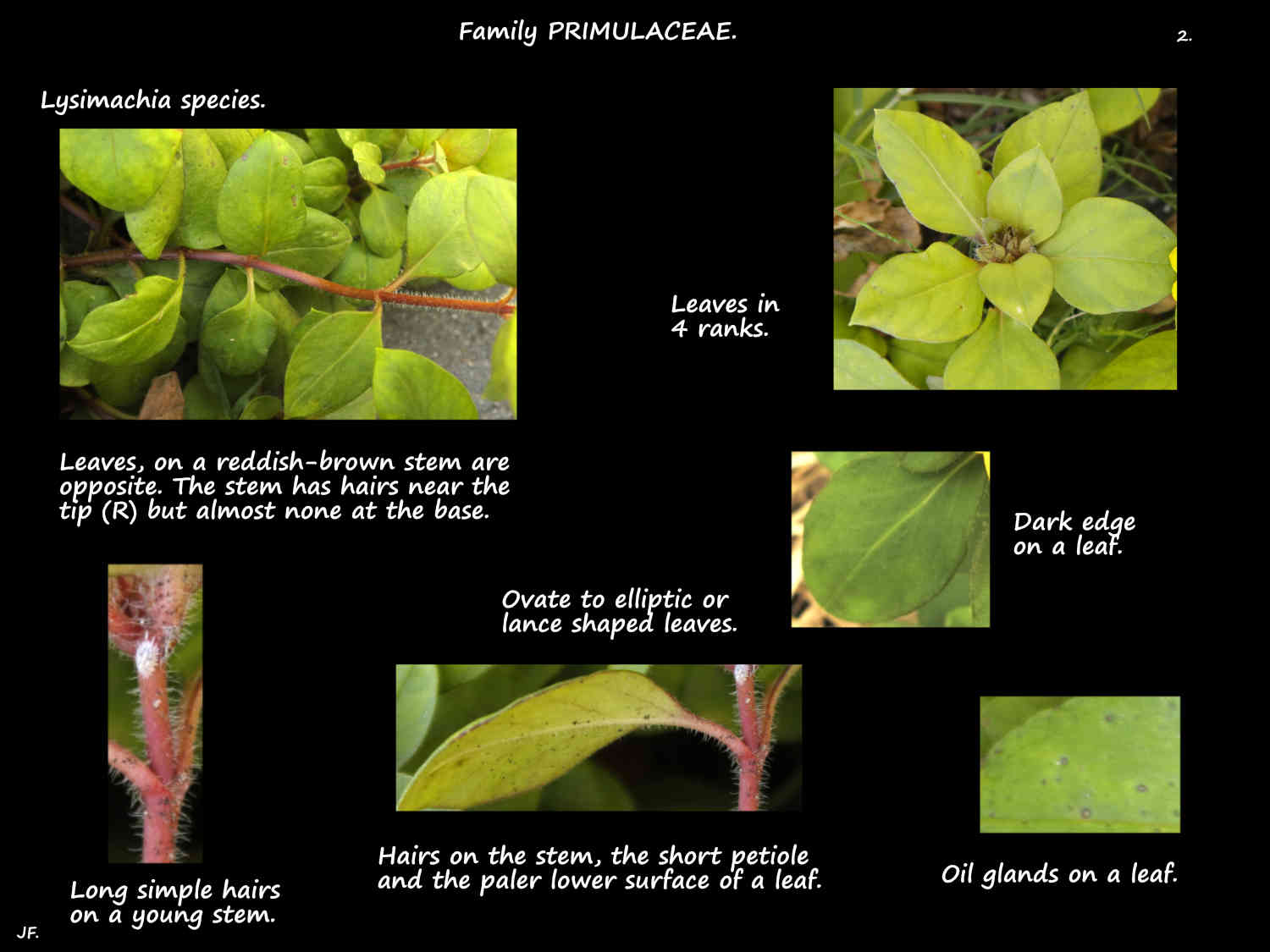Lysimachia species.
(The following is a summary of the features of Lysimachia species found in Australia.)
They are perennial herbs often seen in moist areas.
They can be ground covers under 8 cm high with prostrate stems, small mounding plants 10 to 40 cm high with erect or semi-erect stems or bushy plants up to 1.5 m.
Above ground stems grow from underground stems (rhizomes).
Stems, often unbranched can be round or 4-angled in cross section.
Angled stems may have small to obvious wings or keels on the angles.
Stems may have no hairs, young stems may have small glandular hairs and older ones may have multi-cellular hairs.
Leaves are often opposite but may be alternate or in whorls of 3 or 4.
They can have no petiole or one a few mms long.
The blades range from around 1 cm to 10 or 12 cm long.
Blades are variable being ovate, elliptic or lance or spatula-shaped.
The smooth upper surface has small orange to black oil glands.
The paler lower surface may have tiny glandular hairs.
Terminal or upper axillary inflorescences can be 1 or 2 flowers, a spike with flowers opening from the base up (racemes) or branched clusters (panicles).
Midribs and branches may be smooth or have glandular hairs.
Flowers are on pedicels from 1 to 15 mm long with leaf-like bracts at the base.
The 5 triangular to ovate sepals, around 4 mm long have a pointed tip.
They can be longer or shorter than the petals.
The mostly free sepals may have a thick orange edge that darkens with age.
They may be smooth or have glandular hairs on the outer surface.
The petal bases are fused into a corolla tube with 5 spreading lobes.
The 5 ovate to oblong lobes are up to 1 cm long making the corolla up to 2.5 cm across.
Flowers can be white, pink, red, blue yellow or orange.
On the more commonly seen yellow flowers the base of the corolla tube is reddish and the lobes may have reddish glands and other markings.
Filaments of the 5 stamens, around 4 mm long are fused at the base to form a stamen tube.
They are densely covered with small glandular hairs.
There are nectaries and the style from the superior ovary extends past the anthers.
The fruit are roughly spherical capsules around 3 to 4 mm across.
The calyx, slightly shorter or longer than the capsule, remains around it.
The top of the capsule has small glandular hairs.
Capsules can open around the middle (circumsessile) or split, from the top down into 5 valves.
The numerous flattened seeds have a thickened edge.
Nurseries in Australia have Lysimachia arvensis (detailed after this), L. clethroides, L. minima with alternate leaves, L. nummularia (also known as L. Aurea or L. nummularia ‘Aurea’) and sold as Creeping Jenny, L. punctata and L. vulgaris.
There are cultivars of some species and they can hybridise.
J.F.





